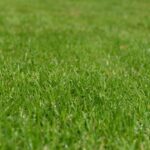Soil surveys undertaken since 2009 by soil and landscape consultancy Tim O’Hare Associates have provided an insight to the use of land in and around London that is managed by The Royal Parks. The prime objective of each survey was to support tree planting and inform the management of grassland and woodland areas for wildlife conservation but an unexpected bonus has been the light shed on London’s past, as far back as the 14th century.
Tim O’Hare Associates’ work with The Royal Parks began with a soil survey of Kensington Gardens in 2009 to support on-going tree planting and landscape management strategies. This work was followed by surveys, with a different remit, of Richmond Park (2010), Bushy Park (2012) and this year Greenwich Park.
For these three sites The Royal Parks required a ‘whole site’ survey of the soil on a compartmental basis to determine such characteristics as soil type and texture, pH and nutrient status. The surveys used methodology designed specifically to provide the requisite information for habitat recreation and restoration in agri-environment schemes.
At Greenwich Park, for example, Tim O’Hare Associates took a total of 28 soil samples, each derived from a minimum of 15 cores per compartment. The data was interpreted by Tim O’Hare Associates with respect to soil properties and fertility status. The findings are being used by The Royal Parks to target areas of each site that show soil types – mainly ‘low fertility’ – which suggest the best potential for a particular approach to land management to encourage grassland plant diversity. This could include introducing grazing, or changing the normal cutting regime to fewer cuts, allowing grass to grow longer through the year and encouraging the development of meadowland.
Surprisingly, the surveys revealed more than the outcomes required by The Royal Parks. Tim White, Senior Associate at Tim O’Hare Associates who was responsible for the The Royal Parks surveys, was fascinated by the history of land use shown by the soils themselves:
“The surveys turned up several surprises relating to the past uses of these three sites. The natural soils for these locations have quite low fertility but the analysis showed variable levels of soil nutrients relating to historic land management. This included the application of sewage sludge to parts of Richmond Park. Bushy Park, for example, was quite clearly used in the 14th and 15th centuries for what, at the time, was relatively intensive agriculture. In the north east of the park – near the USAAF and Eisenhower Memorials – whole bricks and debris, the remnants of demolished barracks and other military buildings from World War II, were found close to the surface.”
“This year’s survey of Greenwich Park showed that, until quite recently, land management had included applications of fertiliser to optimise grass growth. Whilst this enhanced fertility is good for trees, shrubs and amenity lawns, it is detrimental to the establishment of wildflower grasslands as it tends to encourage the growth of grasses and aggressive species such as docks and nettles. It is this level of information about the underlying soils provided by the surveys that will enable The Royal Parks to determine their land management strategies into the future”. www.toha.co.uk

Industry Conference:
Soil – Meeting the challenges of a changing landscape
14th October 2015 at the Howbery Park Conference Centre, Wallingford, Oxfordshire
Book online at www.toha.co.uk

